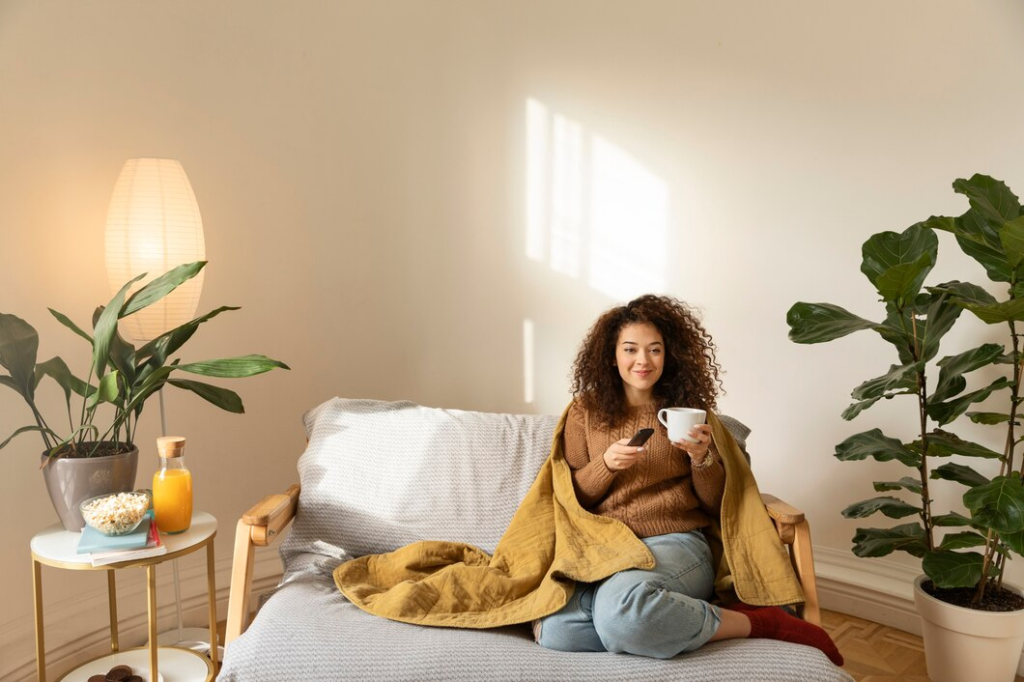
Your home affects your health more than you might think. The air you breathe, the surfaces you touch, and even the cleaning products you use all impact how you feel day to day.
And no, you don’t need expensive renovations or fancy gadgets to create a healthier living space.
Let’s look at some easy ways to make your space work better for you.
Dust and Vacuum Regularly
That layer of dust accumulating on your bookshelf is potentially harmful to your health. Did you know that household dust is a complex mixture of dead skin cells, pet dander, dust mites, pollen, and even toxic chemicals that settle in from the air? Ouch.
Regular dusting and vacuuming significantly reduce these contaminants. You’d be surprised to know that indoor air can be more polluted than outdoor air. All that dust floating around can trigger allergies, asthma attacks, and other breathing problems.
For maximum effectiveness, use a vacuum with a HEPA filter, which can trap particles as small as 0.3 microns. When dusting, opt for microfiber cloths that capture dust rather than just pushing it around. Aim to vacuum high-traffic areas twice weekly and dust surfaces at least once a week.
Get an Air Purifier
Air purifiers provide an additional defense against indoor air pollutants. These devices work by drawing in air and passing it through filters that remove contaminants before recirculating the cleaned air back into your home.
A study found that using HEPA air purifiers reduced fine particulate matter in homes by up to 55%. This reduction can be particularly beneficial for those with allergies, asthma, or other respiratory conditions.
When shopping for an air purifier, look for one sized appropriately for your space. The clean air delivery rate (CADR) indicates how quickly the unit filters the air. Higher CADR numbers mean faster and more efficient filtering. Place purifiers in bedrooms and living areas where you spend the most time for maximum benefit.
Leave Your Shoes at the Door
This super simple habit keeps a ton of nasty stuff out of your home. You’d be surprised to know that your shoes track in more than just visible dirt. They carry bacteria, pesticides, lead dust, and other toxins from outside environments.
Research from the University of Arizona found that the average shoe sole contains more than 421,000 bacteria, including E. coli. Furthermore, a study published in Environmental Science & Technology discovered that toxic chemicals from asphalt road sealant could be tracked into homes on shoes, where they can persist in carpets and dust.
Make sure you set up a dedicated space for all your shoes near the entrance. This makes the habit easier to maintain. You can also keep a pair of house slippers and a few extra ones for guests.
Maintain Healthy Humidity Levels
The moisture balance in your home significantly impacts both your health and your home’s structural integrity. Ideal indoor humidity levels fall between 30-50%. Levels above this range create conditions favorable for mold, dust mites, and bacteria growth, while very low humidity can irritate respiratory passages and dry out skin.
In humid climates or seasons, dehumidifiers can help maintain healthy levels. Conversely, in dry winter months, humidifiers can add needed moisture to the air. Digital hygrometers, which measure humidity levels, are inexpensive and can help you monitor conditions throughout your home.
Other humidity-controlling strategies include using bathroom and kitchen exhaust fans during and after activities that generate moisture, fixing leaky faucets promptly, and ensuring proper ventilation throughout your home.
Choose Non-Toxic Cleaning Products
Many conventional cleaning products contain chemicals that can irritate the eyes, throat, and lungs or trigger allergic reactions. Some ingredients in these products have been linked to more serious health concerns with long-term exposure.
The CDC notes that mixing certain cleaning products can create dangerous chemical reactions—for example, combining bleach with ammonia-based cleaners produces toxic chloramine gas.
Consider switching to eco-friendly, non-toxic alternatives or making your own cleaning solutions using simple ingredients like vinegar, baking soda, and lemon juice. When using commercial products, always follow label directions and ensure adequate ventilation.
Filter Your Water
While U.S. public water systems are generally safe, contaminants can still be present in tap water. These may include lead from old pipes, agricultural runoff chemicals, and disinfection byproducts.
The EPA sets legal limits for contaminants in public water supplies, but these standards may not address all potential health concerns. A 2018 study by the Environmental Working Group found nearly 324 contaminants in U.S. drinking water systems.
Water filtration options range from simple pitcher filters to under-sink systems and whole-house filtration. The right choice depends on your local water quality and specific concerns. Check your local water utility’s annual water quality report (often available online) to understand what contaminants might be present in your supply.
Bring Nature Inside
Houseplants do more than just look pretty; they can actively improve your indoor air quality. Research has shown that certain houseplants can remove volatile organic compounds (VOCs) from the air.
Common houseplants like snake plants, spider plants, and peace lilies are particularly effective air purifiers. Beyond their air-cleaning abilities, plants have been shown to reduce stress levels and improve mood.
When selecting houseplants, consider your light conditions, maintenance preferences, and pet safety if you have animals in the home.
—-
You don’t need to make all these changes at once. Pick one or two that seem most important for your situation, then add more as you go.
Even small steps toward a healthier home environment can make a big difference in how you feel. These simple improvements are so effective that many healthcare professionals, including those with specialized NP certificate programs, now include home environment assessments in their patient care plans.
Your home should help you feel good – and with these simple changes, we’re positive thar it can.